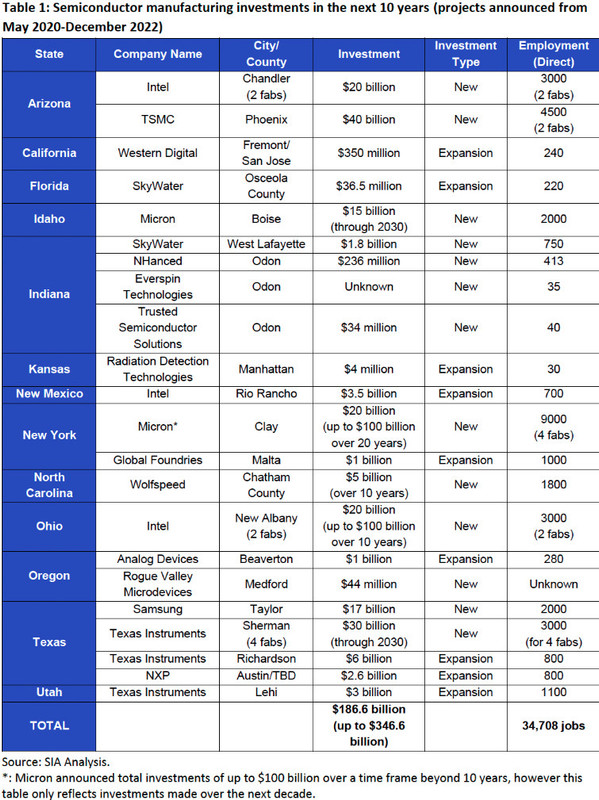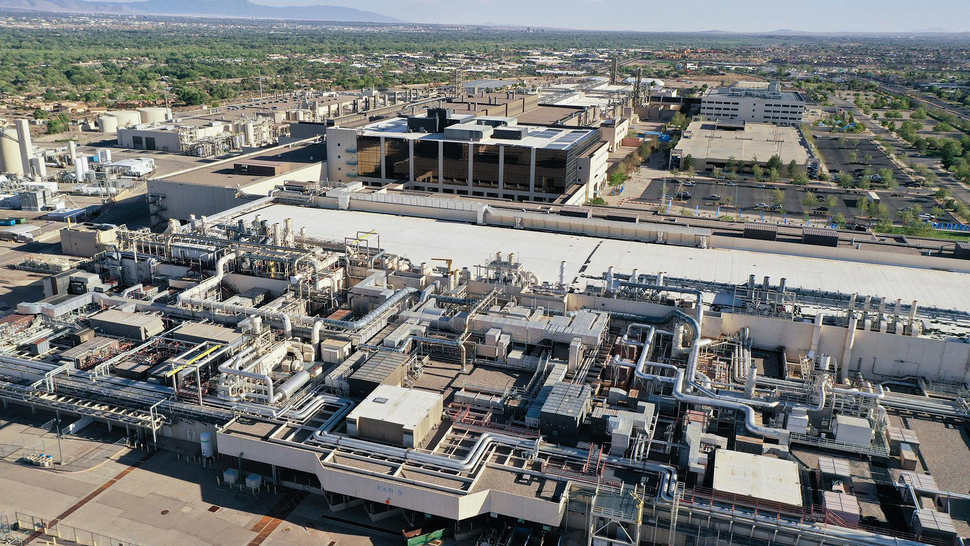Semiconductor industry is reviving in the USA, says SIA.
Although developers and makers of chips are yet to receive grants enabled by the CHIPS and Science act, its announcement and subsequent enactment have already attracted some $200 billion of private investments in the U.S. semiconductor sector, according to the Semiconductor Industry Association, a lobbying group for the industry.. The new projects will impact both chip production as well as electronics manufacturing in the USA.
The CHIPS act was first introduced in the Spring of 2020 and immediately got attention of the semiconductor industry leaders. TSMC was among the first to announce a major new fab project in Arizona in mid-May 2020 and since then over 40 new semiconductor ecosystem projects were announced all across the U.S. Eventually, these fabs and other production facilities will enable some 40,000 direct well-paid jobs.
When it comes to actual semiconductor fabrication plants, 13 new fabs are being built in the U.S. and nine are expanding, which revives not only American semiconductor industry, but will also impact production of electronics in the USA. Ten more new fab phases have been announced by various makers like Intel, TSMC and Texas Instruments.
The new fabs will produce everything from simple power management ICs (PMICs) and audio amplifiers to innovative memory to advanced CPUs, GPUs and SoCs for a variety of applications.
In addition, 20 equipment and materials supplier projects that will source gas, chemicals, tools, and wafers for chip fabs are being built in the USA with 12 of them set to be located in Arizona, where Intel and TSMC are setting up their new production facilities.


Producing chips in the U.S. is important from national security, supply chain reliability and economic points of view. But U.S. made chips will also inspire more electronics production in the country. While we hardly expect companies like Apple, Dell or HPE to transfer manufacturing of their PCs and smartphones to the U.S., some other makers can do just that. Of course, because modern production is heavily automated, production facilities still employ people.
The SIA claims that for each U.S. worker directly employed by the semiconductor industry, an additional 5.7 jobs are created in the wider U.S. economy.
"SIA looks forward to working with the Commerce Department to ensure the CHIPS Act is implemented in an effective, efficient, and timely manner," a statement by the association reads. "Doing so will help reinvigorate U.S. chip production and innovation and deliver major benefits for America’s economy, job creation, national security, supply chain resilience, and technology leadership."
- Karlston
-

 1
1




Recommended Comments
There are no comments to display.
Join the conversation
You can post now and register later. If you have an account, sign in now to post with your account.
Note: Your post will require moderator approval before it will be visible.